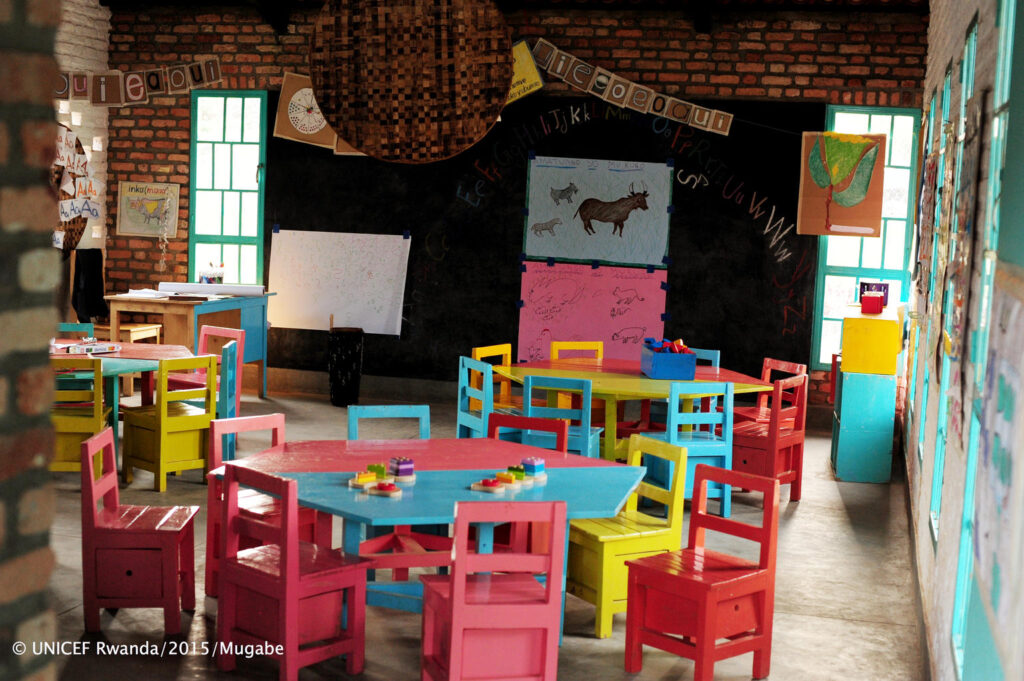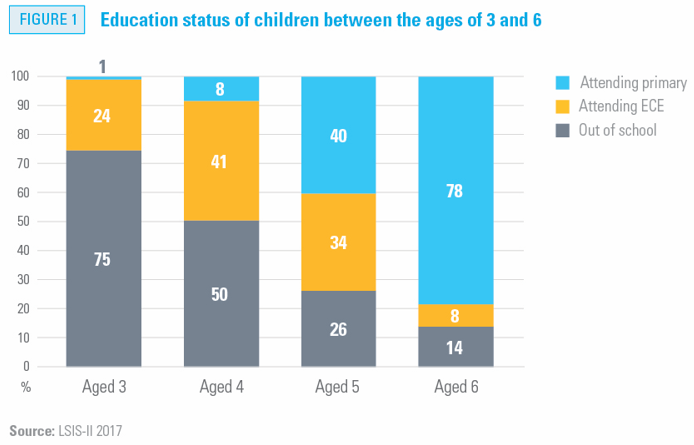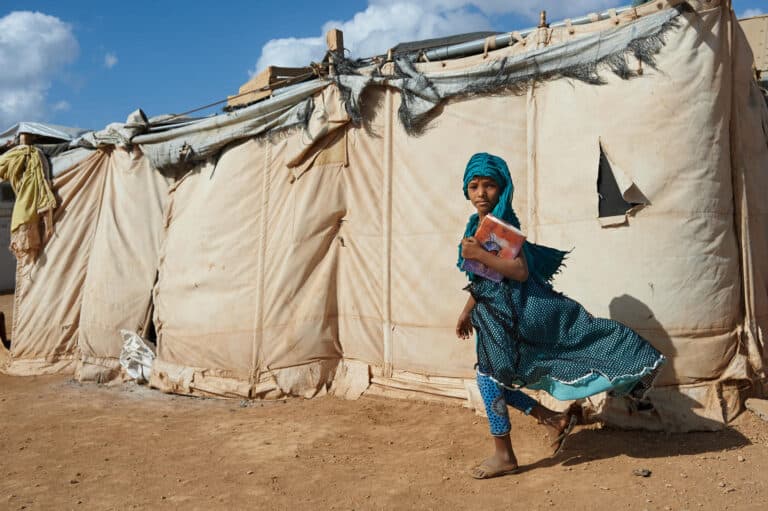Early learning provides tremendous lifelong advantages to children both in terms of their future education and life skills. Enrolling early in age-appropriate programmes allows children to learn at the right age and to be prepared for moving forward to higher levels of education. In this context, the Sustainable Development Goal (SDG) indicator 4.2.2 was set to measure “Participation rate in organized learning (one year before the official primary entry age)”.
In Lao PDR, the starting age for primary school is 6 years old. This means that SDG4.2.2 in the country measures the share of five-year-olds who are attending Early Childhood Education (ECE) or primary education. The most recent data show that 74 per cent of children who are aged 5 attend some form of organized learning (Figure 1). Nonetheless, a more careful assessment of the data shows that only 34 per cent of children aged 5 attend ECE, which is the education level specifically designed to their age group.
It is important that children receive education that is appropriate to their age and that they attend schools that are prepared to teach children age-relevant content, which is why in 2015, ECE was made free of charge in Lao PDR. Despite this measure, many parents continue to enrol their children aged 5 and younger in primary education, instead of ECE, which is designed for their age group. Several reasons hamper age-appropriate ECE enrolment, including: (1) a lack of accessibility, as ECE programs may be unavailable in some areas of the country; (2) a misperception among parents about the advantages of early enrolment in primary education instead of ECE; (3) or a heavy focus from parents on academic, instead of holistic, development for their young children.
Learning outcomes of ECE
Early Childhood Education plays a pivotal role in ensuring that children learn and that they transition from the pre-education phase, which fosters holistic child development and active learning, into the education phase, which equips children with the capacity to learn and thrive. Children who are too young to attend primary schools should be given the chance to participate in education through ECE, which would aid their transition and guarantee that they are developmentally on-track and ready to start primary education at the appropriate age.
Child development can be measured using a series of variables including their social, numeracy and reading skills. One indicator of child development is literacy-numeracy, which consists of a combination of three capacities expected from children: reading four simple words, identifying at least 10 letters of the alphabet and knowing their name and recognizing numbers from one to 10.
Data from Lao PDR reinforces the need for age-appropriate enrolment in ECE and the role it has in equipping children with the necessary literacy and numeracy competencies to start primary school. Nationally only 12 per cent of children who miss out on ECE meet the level development of literacy and numeracy expected for their age group, which makes them less prepared to start primary education. In the meanwhile, children from all backgrounds who attend ECE education are much more likely to be developmentally on track (53 per cent).
The link between repetition and premature enrolment
In Lao PDR, 40 per cent of children are enrolled too early in primary school. Early enrollment in primary education means that children start Grade 1 when they are younger than the official age of school entry of 6, the age for which schools are prepared to accommodate. Schools, curriculum and teaching materials are all designed for students who are of a given age and should be attending the appropriate grade for that age. Students who are too young to attend a certain grade can have more difficulties integrating in school.
Repetition in most grades in Lao PDR is low, with the notable exception of Grade 1 of primary education, which a whopping 14 per cent of students repeat. Starting at first grade of primary school can be a difficult change for many students, which explains higher repetitions at this stage. However, the first grade of primary school is particularly complicated for those who enter primary education too young.
Figure 4 below shows the distribution of repeaters in Grade 1 by age to explain the importance of age-appropriate learning. Many more children who repeat Grade 1 started too young, at ages 4 or 5, than those who pass to Grade 2. This means that younger children have a harder time adapting to primary school. One of the reasons for that could be that those children who entered primary education too young are the ones who did not previously attend ECE and were not equipped with the numeracy and literacy skills that ECE provides.
Better measuring early learning and expanding ECE
Improving access to ECE should be a priority to equip children with the right competencies before they start primary education, as well as to prevent repetition early on in their primary education. As a result, simple monitoring of SDG4.2.2 is insufficient to understand whether children who attend school one year before primary school age are indeed receiving age-appropriate education, which should be ECE.
Sometimes, the lack of ECE availability pushes parents to send children to primary school when they are still too young to attend. However, early attendance of primary school hampers learning and leads to higher repetition among younger children in early grades.
Besides repetition, there is also a strong link between sending children too early to primary schools and quality of primary education. Figure 1 shows that a total of 40 per cent of children aged 5 who are not supposed to attend primary schools do so. This influx of under-age children increases the number of pupils per teacher in Grade 1 and lowers the quality of education at this critical transition from ECE to primary education. Having more children in class, especially given that some of the pupils are not mature enough to pass that class, decreases the quality of education for all students and increases the likelihood of repetition.
ECE has a strong role in ensuring that children are developmentally on track for their age and that they are prepared to start primary education with the necessary skills. It is important that schools providing ECE are available for all children and that they succeed in enrolling and getting ready to start primary education at the appropriate age.







